Simplified Steps: Resetting Your Windows Startup Repair Password
- Home
- Support
- Tips System Rescue
- Simplified Steps: Resetting Your Windows Startup Repair Password
Summary
Learn how to reset a forgotten Windows Startup Repair password using various methods, including password reset disks, advanced startup options, and factory resetting as a last resort.
Table of contents
The Windows Startup Repair password is a security measure implemented to protect the system during the repair process. This password is associated with the administrator account on your computer and is specifically used to grant access to the Startup Repair tool.
Accounts in the administrator group are the only ones available during the startup repair. The Windows Startup Repair password is the regular login password of the selected Windows account. It is necessary to ensure that only authorized individuals can access and modify the system during the repair.

Here are the step-by-step instructions on how to use a Windows password reset disk:
Step 1: Turn on your computer and enter an incorrect password on the login screen.
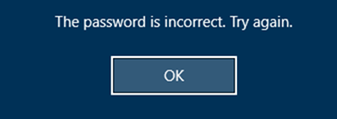
Step 2: After a few failed attempts, a “Reset password” option will appear. Click on it.
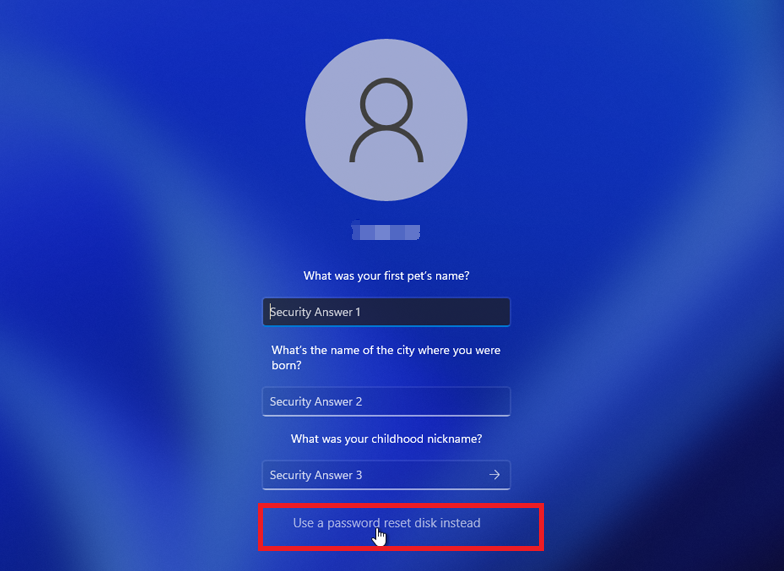
Step 3: Follow the instructions on the screen, and when prompted, insert the password reset disk you created earlier.
Note: To reset the password of the current account, you must use a password reset disk created specifically for that account. Using a password reset disk created for another account will not work.
Step 4: Select the password reset disk from the options provided and click “Next”.
Step 5: Enter your new password and confirm it. You can also provide a hint for your new password if desired.
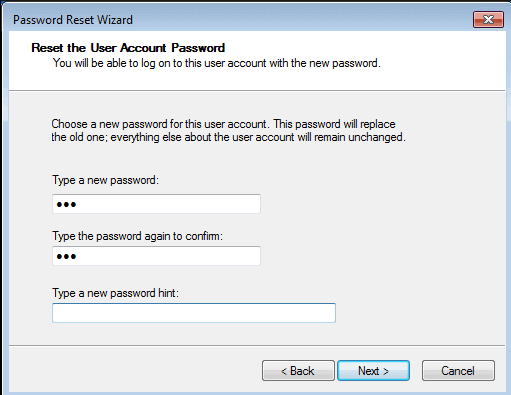
Step 6: Click “Next” and then “Finish” to complete the password reset process.
Remember, it is crucial to keep your password reset disk in a secure place to avoid unauthorized access to your computer. Additionally, if you haven’t created a password reset disk beforehand, this method may not be applicable for resetting your Windows startup repair password. In such cases, the other methods mentioned in this article can be tried for resetting the password.
- Effective method for resetting forgotten Windows startup repair password
- Provides step-by-step instructions for using the password reset disk
- Allows users to create a new password and add a hint for future reference
Cons:
- Requires creation of a password reset disk before forgetting the password
- Not applicable if a password reset disk was not previously created
Sometimes, the traditional method of using a Windows password reset disk might not work for resetting the startup repair password on your Windows computer. In such cases, you can rely on third-party software like Renee PassNow to simplify the process.
Step 1: Download and Install Renee PassNow
Start by downloading Renee PassNow from the official website and install it on a different computer that you can access. You can choose the appropriate version based on your computer’s operating system.

Remove Windows Login Password 3 steps for whole password remove process.
Recover the files Recover the deleted files without Windows system.
Transfer the data Transfer the important files of the computer with system.
Fix Windows startup error Fix various Windows startup failures or crashes.
Erase disk Completely erase disk files which will not be restored.
Remove Windows Login Password 3 steps for whole password remove process.
Recover the files Recover the deleted files without Windows system.
Transfer the data Transfer the important files of the computer with system.
Launch Renee PassNow and insert a USB flash drive or blank CD/DVD into the computer. Select the option to create a bootable media. Follow the on-screen instructions to complete the process.
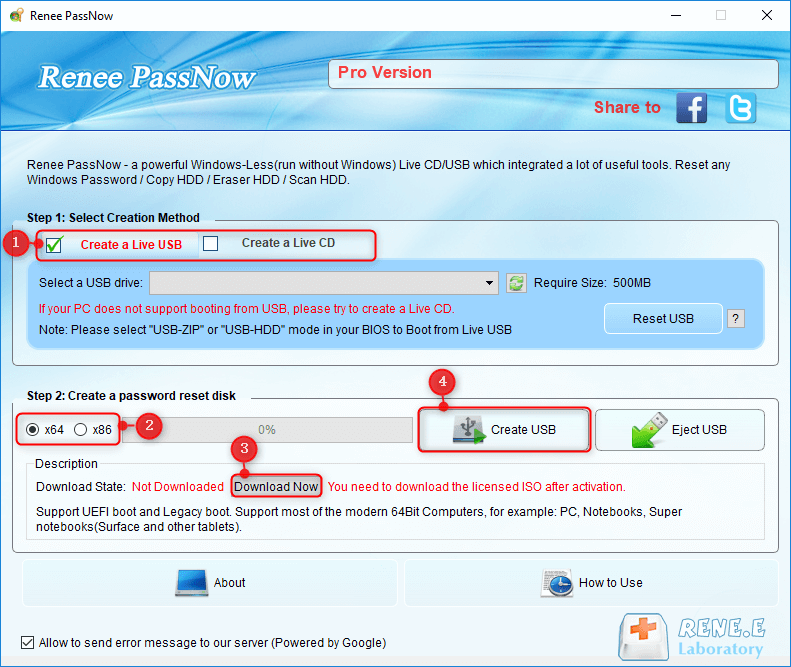
Step 3: Boot the Locked Server from the Bootable Media
Insert the bootable USB or CD/DVD into the locked Windows computer. Restart the computer and enter the BIOS settings by pressing the appropriate key (usually F2 or Delete). Configure the boot order to prioritize the bootable media.

Step 4: Reset the Password
After successfully booting from the bootable media, Renee PassNow will load. Select “PassNow!” function after booting from the new created Windows password reset disk.
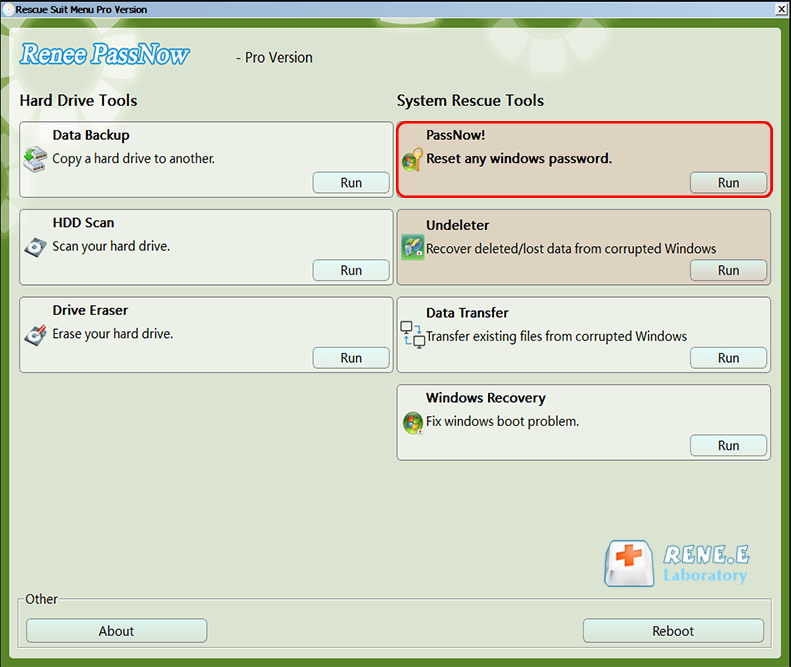
Step 5: Resetting the Password
Choose the user account for which you want to reset the password. Then, click on the “Reset” button. Renee PassNow will remove or reset the password for the selected user account.
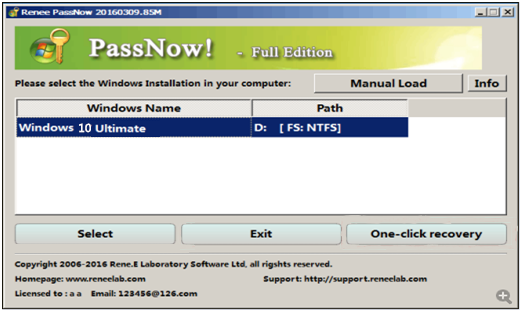
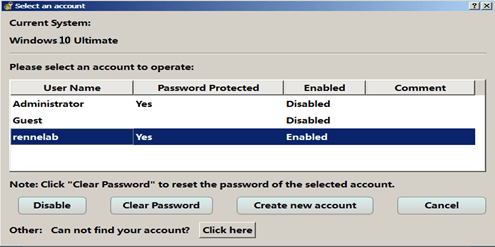
Step 6: Reboot the PC
Once the password is reset, remove the bootable media from the PC and restart the computer. You will now be able to log in to Windows Account without a password.
Using Renee PassNow provides a reliable alternative to reset the startup repair password when the traditional methods fail. It simplifies the process by offering an intuitive interface and step-by-step instructions, ensuring that you can regain access to your Windows computer efficiently.
- Provides a reliable alternative to reset the startup repair password
- Offers an intuitive interface and step-by-step instructions
- Simplifies the process of regaining access to a Windows computer efficiently
Cons:
- Requires downloading and installing third-party software
- Need to purchase a license code.
To begin with, start by accessing the advanced startup options. This can be done by first shutting down the computer completely. Then, turn it back on and immediately press the designated key to enter the boot menu. The key to access the boot menu can vary depending on the computer manufacturer, but it is commonly F8, F11, or Esc.
Once you’re in the boot menu, navigate to the advanced startup options. This may be listed as “Advanced options” or “Repair your computer,” depending on the version of Windows. Select this option and wait for the computer to load the advanced startup menu.
In the advanced startup menu, choose “Troubleshoot” followed by “Advanced options.” Then, select “Startup Settings” and click on the “Restart” button. This will restart the computer with additional startup options.
After the restart, a list of startup settings will appear. Press the corresponding key to enable “Safe Mode with Command Prompt.” This will load Windows in a minimal state with only essential drivers and services running.
Once in Safe Mode with Command Prompt, you will be prompted to enter your administrator credentials. Here, you can reset the password by typing a command in the command prompt window. For example, you can use the “net user” command followed by the username and new password:
net user [username] [new password]
(Please replace [username] with your selected account, replace [new password] with your new password)
Press “Enter” after entering the command, and if successful, a message confirming the password change will be displayed.
After resetting the password, restart the computer normally by selecting the “Restart” option. You should now be able to log in with the newly set password.
It’s important to note that this method requires administrative privileges. If you do not have administrator access or encounter any issues during the process, it is recommended to seek assistance from a professional or refer to Microsoft’s official documentation for further troubleshooting steps.
Please note that this method will erase all the files and programs on your system, so it is crucial to back up any important data before proceeding with the factory reset.
Here are the step-by-step instructions to factory reset Windows 10 and 11:
1. Go to the “Start” menu and click on the “Settings” icon (gear-shaped).
2. In the Settings window, click on the “Update & Security” option.
3. From the left-hand menu, select “Recovery.”
4. Under the “Reset this PC” section, click on the “Get started” button.
5. You will be presented with two options: “Keep my files” and “Remove everything.” Select the latter option to perform a complete factory reset.
6. Next, you will be asked if you want to fully clean the drive. This option is recommended to ensure that all your data is securely wiped. Click on the “Change settings” link and select the “Fully clean the drive” checkbox.
7. Click on the “Next” button to start the factory reset process.
8. Follow the on-screen instructions to confirm the reset and wait for the process to complete. It may take some time, so be patient.
Once the factory reset is finished, your computer will be restored to its original state, and you will no longer need a startup repair password. At this point, you can set up a new password and configure your system as desired. Remember to reinstall any necessary software and restore your backed-up files to regain access to your data.
Keep in mind that factory resetting should be used as a last resort due to the loss of data and the time required to set up your system again. Nonetheless, it can be an effective method to regain access to your computer when all other options have been exhausted.
- Allows for password recovery when all other methods fail
- Restores system back to its original state
Cons:
- Loss of all personal data and settings
- Time-consuming setup process
Forgetting your Windows password can be a real headache, and it often leads to getting locked out of your account after multiple failed attempts. To avoid this frustrating situation, there are several precautions you can take to prevent password resets and ensure you never get locked out of your Windows account.
1. Use a password manager: One effective way to keep track of your passwords is by using a password manager. Tools like KeePass or Password Safe allow you to securely store and manage all your passwords in an encrypted database. With a password manager, you only need to remember one master password to access all your other passwords effortlessly.
| Product Name | Features | Price |
|---|---|---|
| Bitwarden | Open-source/ easy to use/ free tier and inexpensive paid plan/ supports multi-factor authentication/ sharing enabled across all subscription tiers/ offers apps for all popular platforms and browsers | $0.00 |
| Dashlane | Smooth password capture and replay/ revoke device access from anywhere/ secure password sharing/ supports multiple forms of multi-factor authentication/ includes VPN/ scans for compromised accounts/ retains full password history | Available at Dashlane |
| Zoho Vault | Syncs across Windows/ macOS/ Android/ and iOS devices/ supports multi-factor authentication/ accessible across all browsers on any platform/ handles multipage logins/ imports passwords from browsers/ substantial free plan | Available at Zoho Vault |
| 1Password | Apps for Windows/ macOS/ Linux/ Android/ and iOS/ password organization system/ supports multi-factor authentication | Available at 1Password |
| Keeper Password Manager & Digital Vault | Easy-to-use across platforms and browsers/ robust multi-factor authentication support/ secure sharing/ useful auditing tools/ full password histories | Available at Keeper Security |
2. Implement strong and unique passwords: Creating strong and unique passwords is crucial for preventing unauthorized access to your Windows account. Use a combination of uppercase and lowercase letters, numbers, and special characters. Avoid using easily guessable information such as your name or birthdate. It’s recommended to use password phrases or replace certain letters with numbers or special characters.
3. Enable multi-factor authentication (MFA): Adding an extra layer of security to your Windows account can significantly reduce the risk of unauthorized access. Enable multi-factor authentication, which requires users to provide additional verification besides their password, such as a fingerprint scan or a code sent to their mobile device. This way, even if someone manages to obtain your password, they won’t be able to access your account without the second factor of authentication.
4. Regularly update your password: It’s essential to update your Windows password regularly to strengthen your account’s security. Set a reminder to change your password every few months or whenever you suspect any potential security breaches. By frequently updating your password, you reduce the chances of someone gaining unauthorized access to your account.
5. Be cautious with password saving: While it may be tempting to save your passwords in your web browser, it’s not a secure practice. If a password saved in your browser becomes outdated or incorrect, it can lead to account lockouts. Additionally, be cautious with your email account password as it often serves as the recovery account for other services. Protect your email account, as compromising it can give hackers access to reset passwords for other accounts.
6. Adjust account lockout threshold: Windows allows you to configure an account lockout threshold, which determines the number of failed sign-in attempts before a user account gets locked. Finding the right balance between security and user convenience is crucial. Setting the threshold too low may result in frequent lockouts, while setting it too high may increase the risk of brute force attacks. Windows security baselines recommend a value of 10 invalid sign-in attempts as a starting point, but it’s important to assess the risk level of your organization and adjust accordingly.
By following these precautions and implementing these steps, you can significantly reduce the chances of password resets and avoid getting locked out of your Windows account. Remember to prioritize the security of your passwords, regularly update them, adjust the account lockout threshold according to your organization’s risk level, and utilize additional security measures like multi-factor authentication to enhance the overall security of your account.
In conclusion, having a strong password for Windows Startup Repair is crucial in maintaining the security and privacy of your system. By implementing a unique and complex password, you can protect your computer from unauthorized access and potential threats. Remember to choose a password that is not easily guessable and consider using a password manager for added convenience and security. With these precautions in place, you can confidently navigate the Windows Startup Repair process knowing that your information is safeguarded. Stay vigilant, and stay safe!
Relate Links :
Quick and Easy HP Laptop Factory Reset Without Password: A Comprehensive Guide
24-08-2023
John Weaver : Methods for resetting an HP laptop without a password are outlined, including factory resets, password reset tools, and...
Fix 0x0000003b Blue Screen Error on Windows - Quick Solutions
28-04-2024
Jennifer Thatcher : Learn about the causes and solutions for the common blue screen error code 0x0000003b in Windows system crashes....
How To Recover Files from a Hard Drive that Won't Boot in Windows 10?
01-03-2024
Amanda J. Brook : Recover data seamlessly from a computer that won't boot. Uncover tried-and-true techniques to salvage crucial files from your...
Password Reset Techniques for Windows Server 2022: DSRM, Brute Force, and More
26-05-2024
Ashley S. Miller : Learn how to reset the administrator password on Windows Server 2022 by using Directory Services Restore Mode, brute...
- Method 1: Resetting the password using a Windows password reset disk
- Method 2: Utilizing Renee Passnow to reset the Startup Repair Password
- Method 3: Resetting the password using advanced startup options
- Method 4: Factory resetting Windows 10 and 11 as a last resort for password recovery
- How to prevent password resets and avoid getting locked out of your Windows account




